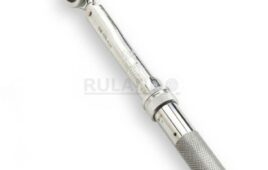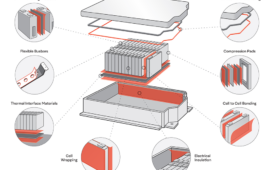Written by Jody Muelaner

A few different types of screw anchors. Clockwise from top left: the original Rawlplug made from bundles of jute; a plastic plug to fix a light screw into masonry; a self-drive drywall anchor; an expanding toggle drywall anchor; and a heavy-duty metal anchor.
Screw anchors are inserts, typically made from plastic, metal, or fiber, which enable the attachment of screws into brittle materials — such as masonry or dry wall.
Known as wall plugs in the UK, screw anchors are available in many forms and offer anchoring solutions for different substrates at varying levels of strength.
The most common type of screw anchor is a tapered plastic tube that’s inserted into a closely fitting drilled hole and tapped flush with the surface with a hammer. A hole in the center of the tube receives the screw and, when tightened, it expands the tube radially outwards gripping the screw anchor against the wall of the hole.
Typically, the tube has slits in the base to facilitate its expansion and ribs on the sides to prevent its rotation when tightening the screw.
Screw anchors were invented by John Joseph Rawlings, a British Engineer in 1910, who had been contracted by the British Museum to attach electrical fittings without causing damage to their masonry walls. In response to the absence of any alternative to chiseling a hole and hammering in a wooden block to nail or screw into, Rawlings solution was based on the concept, “expansion means grip”.
His ‘Rawlplug’ was constructed from eight segments of jute arranged parallel to each other to form a cylinder and held together with glue, the segments expanded apart from each other when a screw was driven into the center of the cylinder.
The plastic screw anchor was invented in 1958 by Artur Fischer, a German inventor. The Fischer Fixings Company still makes the original design — Fischer Expansion plug S — a nylon anchor screw available in diameters of 4mm (1/8”) to 20mm (13/16”) for fixing light objects in concrete and solid masonry.
Drywall requires a specially designed anchor as it is not thick enough to take a masonry screw anchor, many designs are available offering varying strengths.
Common types of drywall screw anchors include:
- Self-drive, a coarse threaded hollow plastic screw driven into a pilot hole
- Molly, a metal sleeve which expands and grips the rear of the board
- Toggle, a metal faster with sprung wings that expand to contact the rear surface of a board
Screw anchors can also describe screws which self-tap into a pre-drilled hole in masonry. Also known as masonry screws, and typically referred to by the brand name Tapcon, these screw anchors have hardened steel threads with cut outs that let the dust created by tapping the thread to fall past the screw, reducing friction and lowering torque driving.





Tell Us What You Think!